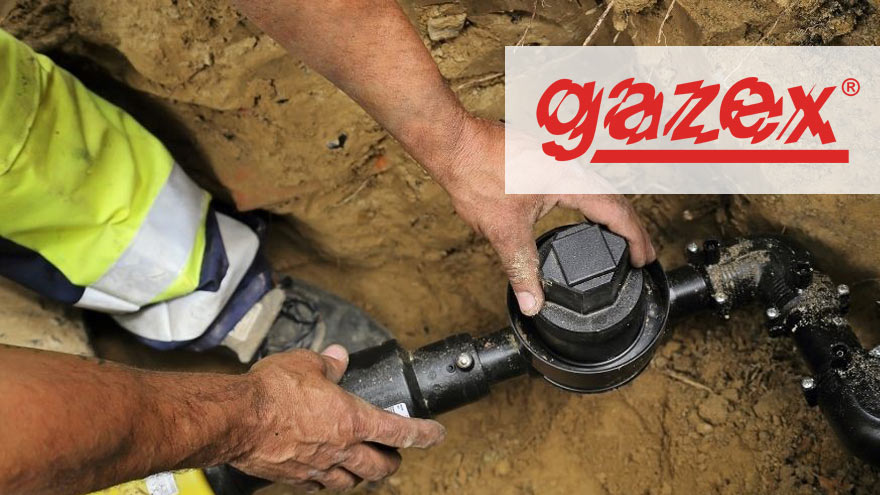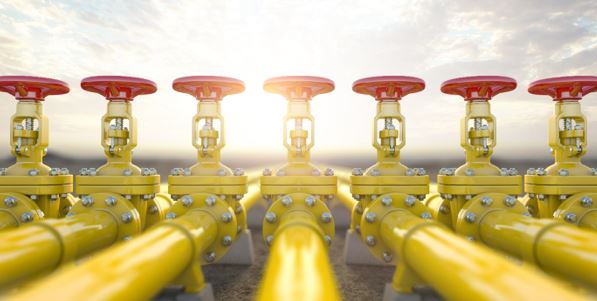The gas detection system determines the safety of use of each building. In order for it to perform its function properly, it must be installed in accordance with applicable rules. In our country, they are regulated by several dozen legal acts. Find out which of them are most important and see what devices you should use when installing systems for detecting and measuring gas concentrations!

From this text you will learn:
- what are the legal regulations regarding the use of gas detection systems,
- how to install a gas detector in accordance with the law,
- what devices to use when installing gas detection systems.
Legal basis regulating the installation of detectors
The most important articles regulating the use of gas detectors include:
- Regulation of the Minister of Interior and Administration on fire protection of buildings, other buildings and areas.
- Regulation of the Minister of Infrastructure on the technical conditions to be met by buildings and their location.
- Industry instructions and regulations specifying the rules for the use of gas detectors.
Let's take a closer look at them one by one.
The Regulation of the Minister of Internal Affairs and Administration of June 7, 2010 treats gas detectors as fire protection devices. They protect against explosions and limit their effects. Systems of this type signal dangerous gas concentrations and can also activate various mechanisms that limit or eliminate the risk of explosion. As an example, consider devices that turn off appropriate electrical circuits, which eliminates the possible danger caused by sparks. In other situations, the system will cut off the gas supply to the leaked installation or activate fans to ventilate the room.
The Regulation of the Minister of Infrastructure of April 12, 2002 requires the installation of gas detectors in all rooms where the heating power of gas devices exceeds a total of 60 kW. The sensors must be equipped with a function that automatically cuts off the gas supply in the event of a fire. This solution can, on the one hand, prevent an explosion and, on the other hand, limit the spread of flames, because the gas flowing from the unsealed installation would intensify the fire.
Industry recommendations related to gas detection systems focus on the principles of use of various devices of this type. Depending on the type of sensors used, the metrological parameters, method of operation and structure of individual detectors will be different. There are 4 main types of sensors:
- catalytic sensors,
- electrochemical sensors,
- semiconductor sensors,
- infra-red sensors (absorption in infrared),
They differ in measurement ranges, selectivity level, susceptibility to interference and service life. All of these factors must be taken into account when installing a gas detection system. Moreover, these parameters will change over time, which makes regular calibration of the sensors mandatory.
Exchange benefits in the new OnnTop loyalty platform!
Detectors can also be divided into stationary and portable. The former operate continuously, and in the event of a threat, they signal when the set concentrations are exceeded optically and acoustically. At the same time, they can activate mechanisms that limit the risk of poisoning or explosion. Additionally, the alarm is sometimes forwarded to the appropriate services. Portable detectors require the creation of a procedure for their use. To use them in accordance with the rules, it is necessary to take into account the need to charge them and ensure appropriate storage conditions and easy access to them.
What conditions must a gas detection system meet?

Let's consider how to legally install a gas detection system. What conditions must it meet?
1. Selection of devices taking into account the needs of users and the conditions in the facility - when installing a detection system, factors such as temperature and air humidity and the presence of other gases interfering with the measurement should be taken into account. You also need to pay attention to the measurement range, the method of data visualization and archiving, and the possible need to control actuators or use emergency power supply. All this will ensure safe and comfortable operation of the system for the user.
2. Proper selection of detector locations - the devices should be installed in the most likely place of gas accumulation. It is necessary to take into account both its weight and air movements in the monitored zone. It is important to remember about easy access to detectors.
3. Correct installation - although it seems obvious, special attention should be paid to the correct installation. The devices must be connected correctly, in accordance with the instructions and using appropriate mounting materials.
4. Correct and common sense operation of the system - detectors must be used in accordance with the rules specified in the user manual. The key issue is strict compliance with the deadlines for calibration, operation control and battery replacement.
What devices do gas detection systems require?

The gas detection system consists not only of detectors, but also of additional devices. Using the Gazex product range as an example, see what equipment for detecting and measuring concentrations of toxic and explosive substances should be installed in the facility.
The Gazex modular Gas Detection System includes 3 extensive groups of devices:
Detectors
They are available in measurement versions (monitor the current gas concentration) and threshold versions (signal when certain values are exceeded). Gazex detectors are divided into 2 types:
- DEX - characterized by an explosion-proof structure - type: flameproof cover.
- DG - characterized by a standard structure, not allowed for use in zones at risk of gas, vapor or dust explosion.
Check out Gazex gas detectors
Alarm modules (control panels)
The task of alarm modules is to power the connected detectors, control actuating devices, as well as receive, analyze, store and visualize data. In the event of a threat, they signal alarm states optically and acoustically. One Gazex module can support up to 16 detectors. If there is a need to install a system with a larger number of sensors, the control panels can be combined into complex teams or addressable devices can be used (over 200 detectors can work with one module).
Executive devices
The actuating devices include, for example, various optical and acoustic signals - sirens, alarm text displays and voice communicators. Another type of equipment of this type are valves:
- flap - closed by releasing the tensioned spring, allowed for use in explosion-hazard zones,
- butterfly - controlled by an electric actuator, used, among others, in large industrial installations.
Thanks to the modular nature of the solution, it is possible to create detection systems of various levels of advancement. This means that each user can easily adapt the installation to their needs. If you want to create a reliable gas detection system, buy Gazex devices, available from the Onninen wholesaler!
Do you have questions about the industry? Join the Świat Instalacji group!